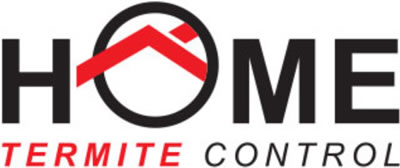
Worried about termites damaging your home? A termite inspection is your first line of defense. This guide will explain what termite inspections involve, why they’re essential, and how they can save you from expensive repairs.
Key Takeaways
-
Regular termite inspections by licensed professionals are crucial for early detection and prevention of termite infestations, which can cause extensive and costly damage to properties.
-
Advanced technologies such as moisture meters and thermal imaging cameras aid in identifying hidden termite activity during inspections, ensuring thorough and effective assessments.
-
Homeowners should prepare for termite inspections by clearing access points and removing obstructions, and they should review inspection reports carefully to address any identified issues and recommendations promptly.
Understanding Termite Inspections
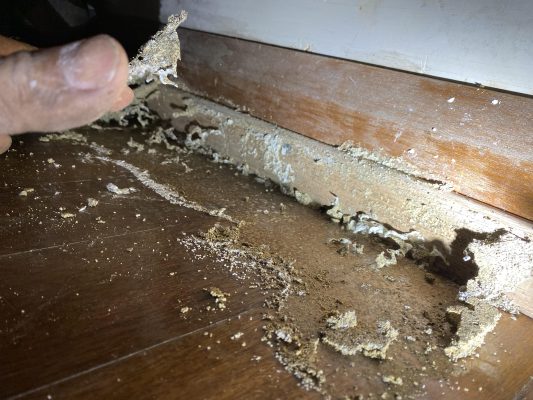
Regular termite inspections are vital to protecting your home against termite damage. These inspections involve a licensed timber pest inspector’s comprehensive examination of your property. The goal is to detect any signs of termite activity early to prevent significant damage and costly repairs. If you suspect your home is infested with termites, contacting professional termite control providers in your locality for a timber pest inspection is advisable.
Conducting termite inspections regularly is imperative for detecting and preventing termite infestations at an early stage. These inspections help identify the presence of termites and assess the risk of future infestations. Understanding how termite inspections work and their importance can save homeowners from the extensive damage and high repair costs of termite attacks.
What is a Termite Inspection?
A termite inspection thoroughly assesses a property’s interior and exterior using specialized tools and technology to detect termite activity. Inspectors typically check areas such as:
-
Subfloors (basements)
-
attics (roof voids)
-
crawl spaces
-
other wooden structures
Where termites are likely to be found, tools like moisture meters and Termatrac (microwave detection units) are sometimes used to identify hidden termite activity. The inspector also discusses specific concerns with the homeowner and gathers information about the property’s history and past termite issues.
The inspection entails a meticulous property assessment encompassing the interior and exterior. An experienced inspector’s goal is to detect the most hidden termite activity, providing a comprehensive overview of the property’s condition. This thorough approach helps identify potential entry points and areas that may require immediate attention to prevent a termite infestation.
Why are Termite Inspections Important?
To prevent structural damage, uphold safety, and evade costly repairs, it’s essential to conduct termite inspections regularly. Even when a structure looks intact from the outside, a hidden termite infestation can make it unsafe. The average cost of treating and repairing termite damage in Sydney, Australia, can be as high as $250,000 per house. Since a medium-sized colony can consume a joist in the subfloor daily, the potential for rapid and extensive damage is significant.
Keeping an eye on the signs of termites is critical in preventing unseen damage and structural issues. Regular inspections help spot termite activity before it becomes a more significant problem, potentially saving thousands of dollars in repairs. Inspections are especially recommended if your neighbours have had a termite infestation or your home is in a high-risk area.
Controlling termite colonies before installing a chemical or physical barrier is essential to prevent damage and ensure adequate termite protection.
The Termite Inspection Process
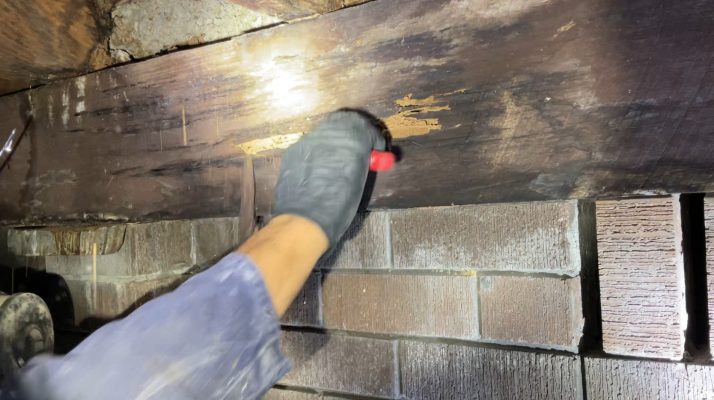
The termite inspection process is systematic and exhaustive, leaving no area unchecked. It involves a systematic examination of both the interior and exterior of a property to identify signs of termite activity. Inspectors check all accessible areas, including:
-
basements
-
crawl spaces
-
attics
-
interior area
They use specialized tools for the inspection. The duration of a termite inspection varies based on factors such as the technician’s skill and experience, the size of the house, and its complexity.
Knowing the steps involved in a termite inspection can help homeowners prepare adequately and ensure a more thorough inspection. From the initial assessment to the final reporting of findings, each step plays a crucial role in identifying and addressing subterranean termite infestations.
Initial Assessment
During the initial assessment, we discuss the history of termite damage with the homeowner and thoroughly examine the property for signs of termite activity. This includes:
-
Checking the exterior for mud tubes and termite damage near the foundation
-
Inspecting the foundations, walls, trees and landscaping elements for any signs of termite activity
-
subfloor and crawl spaces for termite presence
-
Looking for gaps in plumbing penetrations, walls, or floors where termites may have entered
-
Identifying any nests that may have been built within walls
The initial assessment is an essential step in the termite inspection process. It assists in identifying possible entry points and areas of concern. By examining the property’s exterior and interior, inspectors can gain a comprehensive understanding of the termite activity and the extent of the infestation.
Use of Technology
Professional inspections typically use thermal imaging cameras and moisture meters to detect concealed termite activity. These specialized tools help identify termite presence that might otherwise be missed, ensuring a thorough inspection.
Moisture meters detect areas with high humidity, indicating conducive environments for termites. Thermal imaging cameras can identify termite activity behind walls and other hidden areas, providing a detailed view of potential problem areas.
Reporting Findings
Upon inspection completion, inspectors email a comprehensive report encapsulating past or current termite activity, vulnerabilities, and suggested measures. The findings from the inspection, including signs of termite activity and potential damage, are documented and communicated to the homeowner through this report. The report typically comprises several sections, each focusing on different areas of the property, such as the subfloor, interior and roof cavity.
Most termite inspection reports follow a standardized format, which includes the property’s address, the inspection company’s contact details, and a unique report number. Visual aids are often included to help homeowners understand the situation clearly. This comprehensive report is a valuable tool for homeowners to understand the extent of the termite activity and take appropriate actions.
Signs of a Termite Infestation
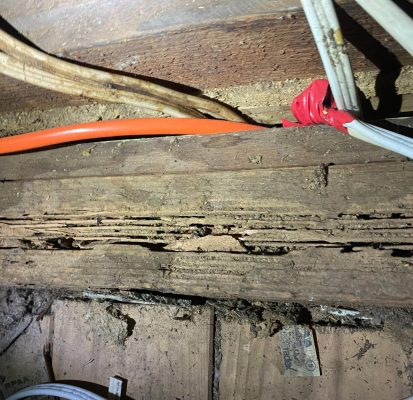
Early detection of termite infestation signs can spare homeowners from substantial damage and expensive repairs. Visible damage, such as mud tubes and damaged wood, is often the first indication of a termite problem. However, more subtle indicators, like dark stains on walls and unexplained cracks, can also hint at termite activity. Understanding both visible and subtle signs can help sydney homeowners take timely action to address a termite infestation.
Inspectors look for a range of signs during a termite inspection, from visible damage to subtle indicators. By being aware of these signs, homeowners can better monitor their properties and seek professional help at the first indication of termite activity.
Visible Damage
Visible damage includes signs of termite activity, such as mud tubes, discarded wings, and damaged wood structures caused by a termite attack. In late spring and summer, homeowners should look for signs of swarmers, their patterns, behaviours, and nests. Mud tubes, or shelter tubes, are created by subterranean termites on external walls to protect themselves from heat of the sunlight and ants.
Hollowed-out pieces of timber that sound hollow when tapped are another visible sign of termite damage. These signs are often the most noticeable and can indicate a significant termite problem if left unaddressed.
Subtle Indicators
Subtle indicators of termite activity can be more complex to detect but are equally important. Professionals are trained to identify these subtle signs that non-experts might miss. Modern termite inspections often use specialized tools to tap on wood surfaces, listening for hollow sounds that indicate termite damage.
Dark stains on walls can appear when termites build a sub-nest inside, causing wet mud to seep through the plaster. Unexplained wobbly gyprock in walls can also signify termite activity. These subtle indicators require a keen eye and professional expertise to identify and address effectively.
Frequency and Cost of Termite Inspections
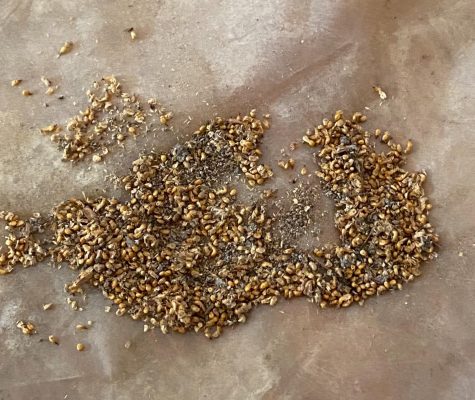
The frequency and cost of termite inspections are key considerations when striving for effective termite management. Termite inspections should be conducted annually or more frequently in high-risk areas to ensure early detection and prevention of infestations. The cost of a termite inspection varies based on factors such as the property’s size and the inspection areas’ complexity. Home Termite Control Charges $298 for an average home.
Understanding how often to get a termite inspection and the associated costs can help homeowners budget for regular inspections and avoid the high costs of treatment and repair due to termite damage.
How Often Should You Get a Termite Inspection?
Termite inspections should be carried out annually at least. Homes within 50 meters of gumtrees are considered high-risk areas and should be inspected more frequently. Inspections should be done every six months in high-risk areas or if there is a current termite problem. Homes without a termite barrier after a prior infestation should also be inspected every six months to ensure there is no recurrence of termite activity.
The risk grade associated with a property can influence the need for thorough termite inspections to develop an appropriate action plan. Regular inspections help in early detection and prevention, reducing the risk of severe termite damage.
Cost of Termite Inspections
A termite inspection typically costs between $250 and $500, and the cost can be significantly influenced by the size of your home and the length of time the inspection takes.
While the cost may vary, investing in regular termite inspections can save homeowners from the much higher costs of termite damage and repair.
DIY vs. Professional Termite Inspections
Homeowners frequently grapple with whether to opt for DIY termite inspections or engage professional inspectors. While DIY inspections can save money, they may lack the thoroughness and expertise of professional inspections. Termite infestations can cause extensive damage if not properly eradicated, making professional treatments a safer and more effective option.
Understanding the pros and cons of DIY and professional termite inspections can help homeowners decide based on their specific needs and circumstances.
DIY Termite Inspection Tips
DIY inspections should focus on regular property checks and minimizing termite risks. Homeowners performing DIY inspections should be cautious as termites often hide within wood structures and are not easily visible. Regularly inspecting the property for mud tunnels or hollow-sounding wood can help detect early signs of termite activity.
Additionally, checking garden beds, retaining walls, and trees close to the house for signs of termites and keeping weep-holes clear can minimize risks.
Benefits of Hiring a Professional inspectors in Sydney
Professional termite inspectors have the skills, knowledge, and experience to conduct thorough inspections and identify signs of infestation. They can treat infestations more effectively than DIY methods, using advanced tools typically cost-prohibitive for homeowners. Professionals can offer tailored advice on preventing future infestations based on specific vulnerabilities in the home.
Hiring a professional for your home ensures that termite inspections are conducted with the highest standards of safety and effectiveness, providing you with peace of mind and long-term protection against termites.
Preparing for a Termite Inspection
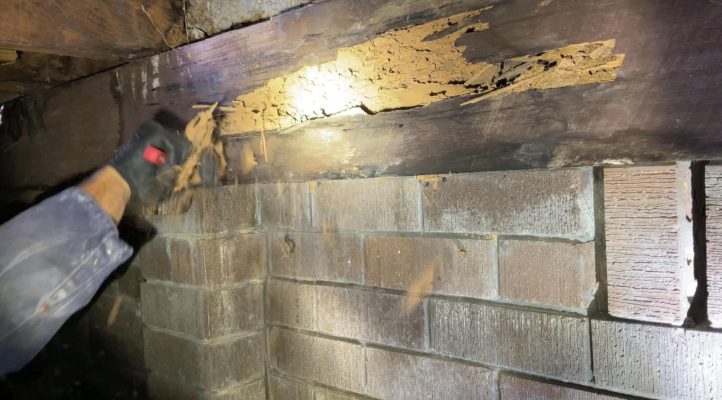
Adequate preparation can notably augment the efficacy of a termite inspection. Homeowners play a vital role in ensuring the inspection goes smoothly by making necessary preparations. This involves clearing access points and removing obstructions to allow the inspector to thoroughly examine all property areas.
By preparing adequately for an inspection, homeowners can ensure that the inspector can access all critical areas of the property, leading to a more thorough and accurate assessment of the termite situation.
Clearing Access Points
Ensure that roofs, garages, basements, and crawl spaces are accessible for inspection. This might involve moving items away from walls and clearing any obstructions in attics and crawl spaces. Making these areas accessible allows the inspector to conduct a comprehensive check for termites, increasing the chances of detecting hidden activity.
Removing Obstructions
Clear clutter and debris around wooden structures and plumbing areas to ensure thorough inspection. Clutter around sinks, pipes, and bathrooms and kitchens should be removed to allow for a detailed examination.
Moving items such as garden equipment, trailers, and bikes away from external walls can help inspectors identify potential termite entry points and nesting areas.
Post-Inspection Steps
Upon completing the termite inspection, homeowners must undertake a few crucial steps. These include:
-
Carefully reviewing the inspection report and understand all the findings and recommendations.
-
Addressing any identified issues promptly to prevent further termite damage.
-
Ensuring the long-term protection of the property.
- Contemplating the installation of a termite barrier to prevent future termite attacks.
By following these steps and utilizing termite treatments, homeowners can maintain a termite-free environment and protect their property.
Following the post-inspection steps, homeowners can effectively manage and mitigate the risks associated with termite infestations, ensuring their property remains safe and secure.
Reviewing the Report
Carefully review the inspection report and prioritize actions based on the severity of the findings. The first page of a termite inspection report typically summarises findings, including a code key to help understand the issues identified. Issues are often flagged as ‘Minor,’ ‘Major,’ or ‘Safety Concern,’ which allows homeowners to prioritize necessary actions.
If needed, understanding the scope of the findings and arranging for a follow-up inspection can ensure that all concerns are addressed appropriately.
Implementing Recommendations
Address recommendations promptly and consult professionals for repairs and treatments. Homeowners should take immediate action on any recommendations to prevent further termite damage. Engaging professionals to perform recommended treatments or repairs ensures that issues are handled correctly and efficiently.
Treatment costs can vary depending on the termite species and factors like property size and layout. If termites are seen above ground, calling termite control professionals or looking for the source can help address the problem faster and more effectively.
Choosing the Right Pest Control Service
Choosing the appropriate pest control service is vital for efficient termite management. It involves checking credentials, insurance, experience, and customer reviews to ensure the service is reliable and competent. Before hiring, thorough background checks on a pest control service’s credentials and reputation are essential. Inquire about the pest extermination methods to ensure they are tested and proven to work.
Choosing a pest control service with extensive experience handling a wide array of pest infestations can lead to better outcomes and long-term protection for your property.
Credentials and Experience
Verify the service possesses a valid license, relevant certifications, and ample experience. A valid license is crucial for offering pest removal services, and the pest control service should have the necessary licensing required in your state. Certifications and affiliations with professional associations enhance the credibility and reliability of pest control services.
Experience in the industry is essential; a pest remover with years of experience can handle pest infestations using advanced techniques.
Customer Reviews and Testimonials
Research customer reviews and testimonials to evaluate service quality and reliability. Previous customer reviews provide valuable insights into the quality of services and overall customer satisfaction. Look for online reviews and testimonials to gain insights into other customers’ experiences.
Additionally, seek recommendations from friends, family, and neighbours.
Summary
Understanding termite inspections in Sydney is essential for protecting your home from the devastating effects of termites. Whether DIY or professional, regular inspections can prevent significant damage and costly repairs. Proper preparation and post-inspection steps ensure that termite infestations are managed effectively. Choosing the right pest control service with the proper credentials, experience, and customer reviews can provide long-term protection for your property. Early detection and timely action are crucial to safeguarding your home from termites.
Frequently Asked Questions
How often should I get a termite inspection?
In Sydney, ou should at least get a termite inspection annually to ensure early detection and prevention of infestations.
What is the cost of a termite inspection?
The cost of a termite inspection can range between $250 and $500, depending on your home’s size and the inspection areas’ complexity.
Can I do my termite inspection?
It’s better to hire a professional for termite inspections. They have the expertise and tools for thorough inspections, offering more effective results than a DIY approach. Avoid the potential for oversight and rely on the expertise of professionals.
What are some signs of a termite infestation?
Key signs of a termite infestation include visible damage like mud tubes and damaged wood, as well as subtle indicators such as dark stains on walls and unexplained cracks. Be diligent in looking for these signs to catch infestations early.
How do I choose the right pest control service?
Choose a pest control service with a valid license, certifications, extensive experience, and positive customer reviews. Thorough background checks and recommendations from friends and family can also help you select a reliable service. Always prioritize licensed and well-reviewed services.
